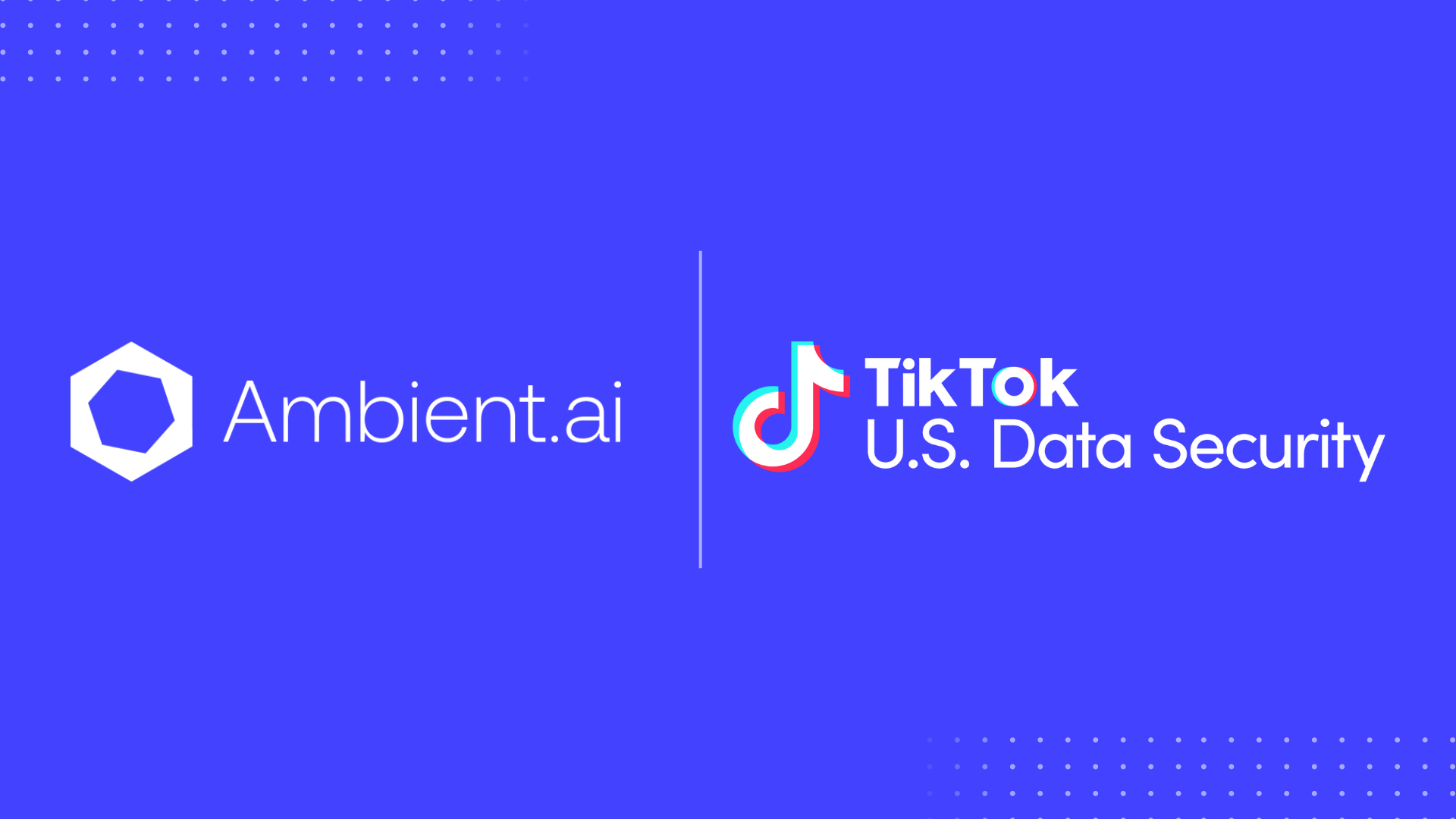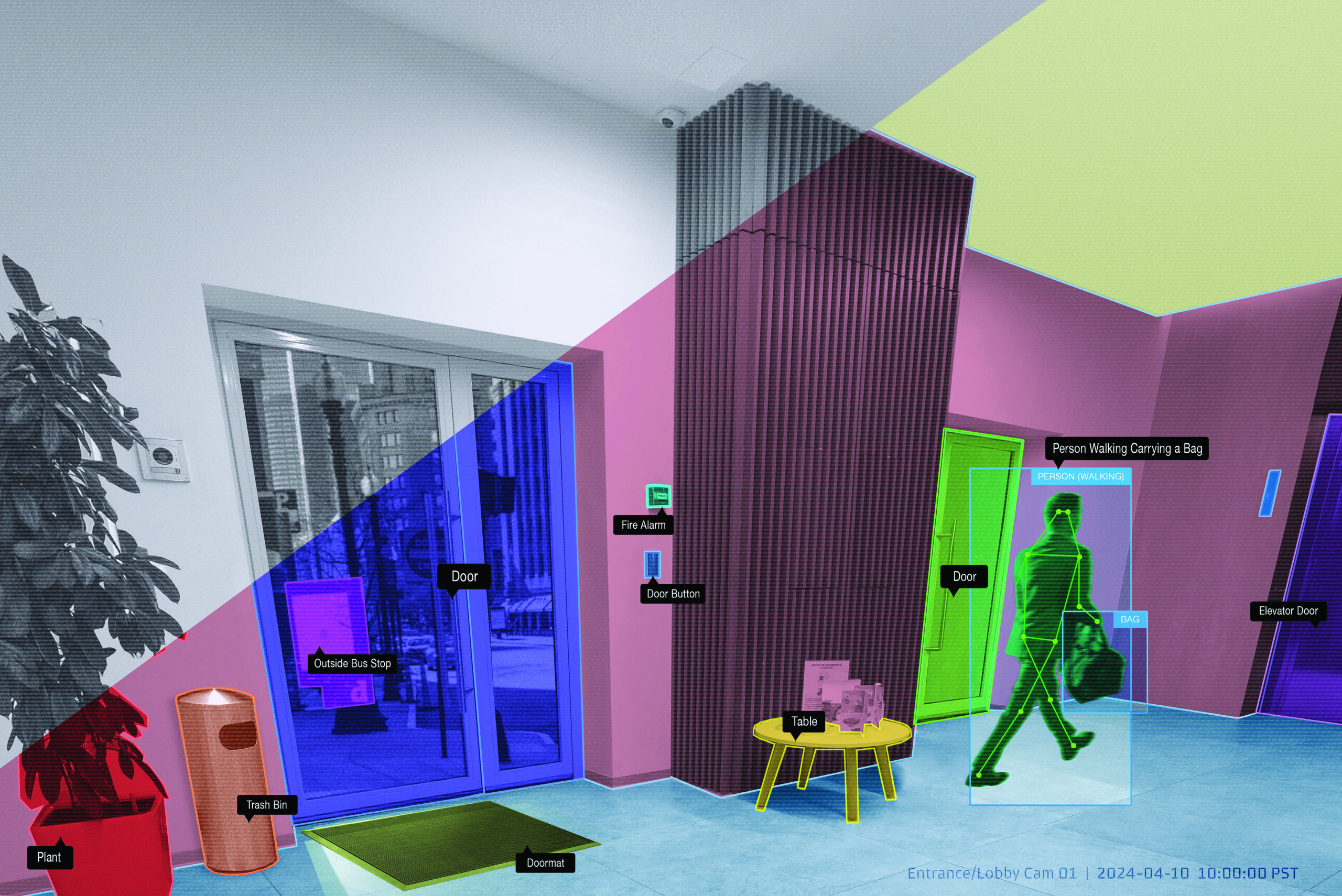In the constantly evolving landscape of physical security, organizations are turning to innovative solutions to gain new efficiencies, enhance their capabilities, and stay ahead of emerging threats. One such advancement is the virtualization of the security operations center (SOC), or on a global scale, the global security operations center (GSOC).
Virtual security operations centers — virtual SOCs — present significant benefits that physical SOCs don’t deliver. If you’re interested in deepening your knowledge of virtual SOCs, or considering implementing this model at your organization, you’ve come to the right place.
In this article, we’ll explore everything you should know about virtual SOCs: their advantages over physical SOCs, their benefits and capabilities, and the pivotal role of AI.
Table of Contents
- What is a virtual SOC?
- Virtual SOC vs. physical SOC
- Benefits of implementing a virtual SOC
- Capabilities of a virtual SOC
- AI’s impact on the virtual SOC
- Create your own virtual SOC with Ambient.ai
What is a virtual SOC?
The digital transformation of the physical SOC into the virtual SOC has widened the scope of what’s possible in security management and threat response.
Unlike SOCs with centralized physical locations, a virtual SOC — sometimes called vSOC — leverages technology to operate in a distributed and scalable manner, allowing for newfound savings and efficiencies.
The primary function of a virtual SOC is to monitor cameras, manage alarms, detect potential threats, and coordinate an effective response to ensure the safety and security of the environment.
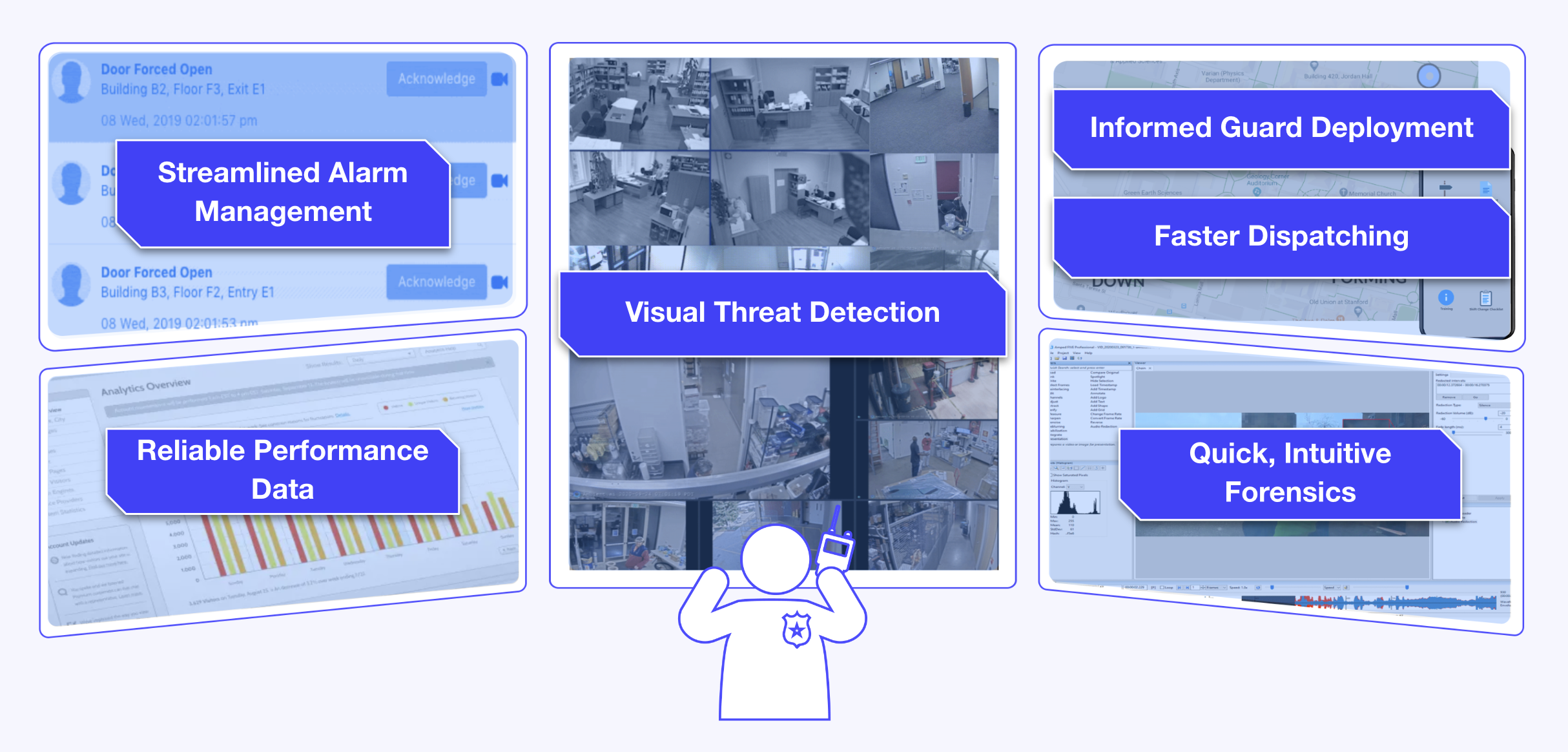
Virtual SOC vs. physical SOC
While SOCs with a physical location and dedicated infrastructure have long been the norm, virtualization welcomes a more efficient and impactful model. Here are several key differentiations between the traditional, physical SOC and the virtual SOC.
- Decentralized operations: Perhaps the most obvious distinction between a virtual SOC and its physical counterpart is the decentralization of operations. In a physical SOC, security operations are centralized within a physical location, housing a command center where security personnel monitor screens, respond to incidents, and collaborate in real-time. The virtual SOC leverages decentralized operations. By using AI and cloud-based technologies, a virtual SOC can operate seamlessly across multiple locations. This facilitates increased flexibility in accessing the SOC from anywhere and provides an extra layer of resilience to maintain an uninterrupted security posture.
- Scalability: The scalability of your SOC is a critical factor in adapting to the evolving dynamics of security needs. Physical SOCs commonly face challenges when scaling operations, requiring additional physical infrastructure and resources. Higher costs and logistical complexities can quickly build up. In contrast, virtual SOCs are inherently scalable. Whether a business experiences rapid growth or needs to scale down, AI and cloud systems enable security teams to easily adjust resources based on current needs and without physical modifications.
- Cost efficiency: Physical SOCs are expensive to build and run. Maintaining a 24/7 centralized command center involves maintenance costs, hardware costs, headcount costs, and more. These costs increase as organizations grow and require more resources and personnel to run the SOC. The cost efficiency of a virtual SOC largely stems from its decentralized nature and lack of extensive physical infrastructure. Plus, by integrating AI to automate what were previously manual tasks — including camera monitoring, alarm monitoring, dispatch management, and forensic investigations — teams can do more with fewer resources and reduced expenditures.
Benefits of implementing a virtual SOC
Virtual SOCs are affordable, effective, and accessible. Security teams with virtual SOCs experience the following benefits:
- Do more with less: With a virtual SOC, limited headcount and resources are no longer barriers to success. AI technology automates routine tasks in the SOC. Automating time-consuming processes helps elevate personnel to high-level decision-making roles, now that they can focus on bigger projects. Teams are capable of making a significant impact regardless of their size or budget.
- Proactive, not reactive: Integrating AI into the SOC allows for proactive monitoring of all endpoints, surfacing the most critical issues for rapid decision-making. Automating repetitive tasks contributes to a proactive security posture, allowing security teams to focus on critical issues rather than simply reacting to incidents.
- Affordable for big and small companies: Unlike physical SOCs, virtual SOCs offer a cost-effective solution suitable for businesses of any size and budget. Many smaller organizations, which may struggle to afford traditional SOCs, can now adopt active monitored security through the use of AI and cloud technologies. Larger enterprises, facing budget constraints and forced tradeoffs, can leverage virtual SOCs to deliver a security program that surpasses traditional models in terms of efficiency and effectiveness.
- Flexibility and global reach: Virtual SOCs allow organizations with a global presence to adopt a unified approach to security across their various geographic locations. Consistent monitoring and response protocols foster a cohesive security strategy, ensuring a standardized approach to security throughout the organization. The flexibility of virtual SOCs — even accessible from a mobile device — allows security personnel to monitor and respond to events from miscellaneous locations, promoting a dynamic and adaptable security posture.
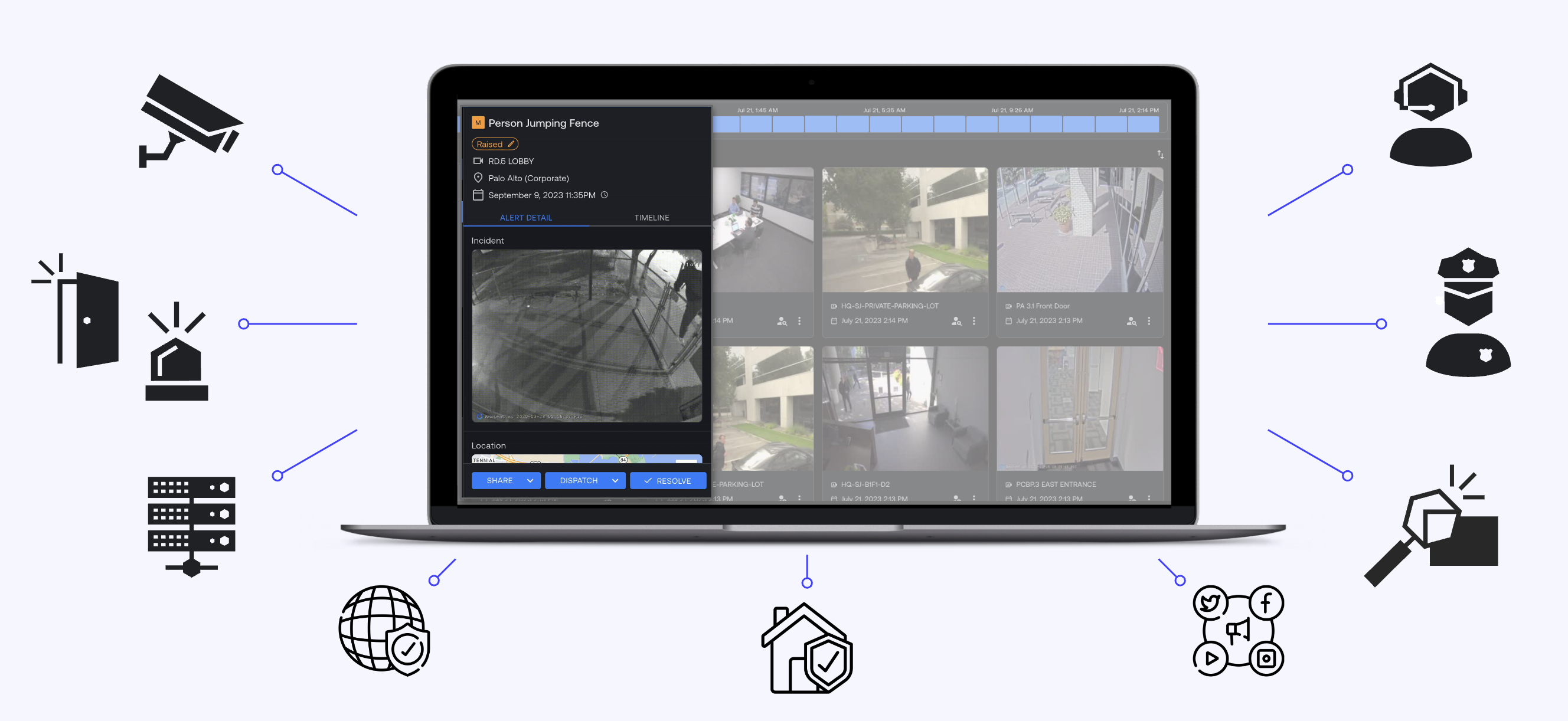
Capabilities of a virtual SOC
A virtual SOC comprises several key capabilities that contribute to its functionality and effectiveness:
- Advanced threat detection: Leveraging AI enables advanced threat detection. Machine learning algorithms are capable of analyzing diverse datasets in real-time, discerning patterns and anomalies in behaviors to identify suspicious activity indicative of potential security threats. With this AI-driven threat detection, teams can effectively reduce the risk of overlooking critical incidents and enhance the speed at which personnel respond to risks.
- Proactive incident response & coordination: Automation plays a pivotal role in virtual SOCs, especially concerning incident response. By employing automated incident response workflows, personnel within virtual SOCs can carry out predefined actions seamlessly without manual intervention. Automation guarantees a standardized and swift reaction to security incidents. Virtual SOCs enable a high standard of efficient cross-communication and defined response workflows. Once an alert is raised, security teams can supply responders with a steady stream of real-time updates, while also cross-sharing with other stakeholders to keep everyone informed.
- Cloud infrastructure for scalability & resilience: Whether accommodating increased security demands or reeling back operations in response to business growth fluctuations, the scalability of cloud-based solutions ensures that security teams can optimize resources without being bound by physical constraints. The decentralized, cloud-driven nature of virtual SOCs improves the overall security infrastructure. In the event of physical disasters, facility-specific incidents, or localized disturbances, virtual SOCs provide uninterrupted security monitoring and response.
- Integration with other systems: Monitoring and responding to signals across divergent systems is inefficient and causes incidents to slip through the cracks. Virtual SOCs emphasize integration as a fundamental capability to unify disparate technologies and provide a complete picture of an organization’s security posture. Integrating and unifying technologies such as surveillance cameras, access control platforms, and AI allows security personnel to access real-time information without constantly switching from system to system.
AI’s impact on the virtual SOC
AI easily solves the problems and limitations of traditional SOCs. SOCs powered by AI technology are highly automated, proactive, and untethered, enabling the prevention of incidents.
Here are several ways that AI enhances the effectiveness of the virtual SOC:
- AI-powered monitoring: AI converts every single camera into a fully monitored endpoint, leaving no threat undetected and no camera unwatched. From people brandishing firearms, to perimeter breaches, to property theft, and much more, AI looks for a range of threats in real time with a deep understanding of the context around events.
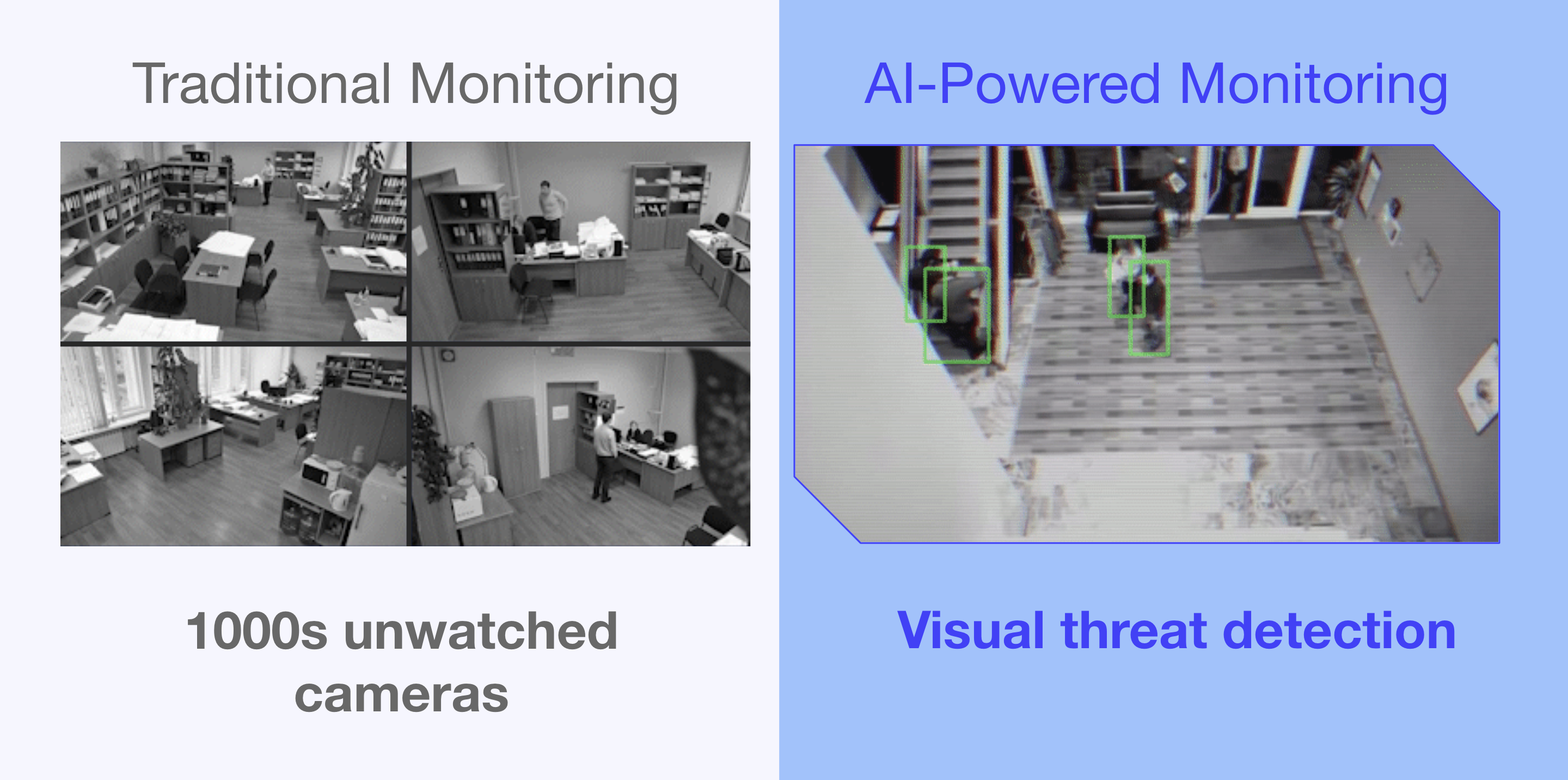
- AI-powered patrolling: AI elevates the impact of guard patrolling with informed deployment and faster dispatches. Guards receive mobile notifications of incidents in progress, including video evidence, so they understand what they’re responding to and the location of the incident.
- AI-powered workflows: Traditional SOCs are plagued with inefficient, fragmented workflows. An AI-powered system consolidates relevant security information into one dashboard to provide a full operating picture. Integrated, intuitive workflows help you manage incidents and the aftermath.
- AI-powered PACS: Streamlined alarm management liberates operators from sifting through thousands of alarms each day. AI correlates the activity on camera feeds with each alarm event to visually validate if an actual incident has happened, auto-clearing the alarm if false.
Create your own virtual SOC with Ambient.ai
Want to enable your own AI-driven virtual SOC? You need Ambient.ai.
Ambient.ai delivers AI-powered computer vision intelligence to help organizations amplify the impact of their SOC by reducing risk, improving security operation efficiency, and gaining critical insights.
By leveraging Ambient.ai to unify their security infrastructure and enhance their security posture, security teams are better equipped to solve their most pressing challenges.
Our Fortune 500 customers and leading organizations across a range of industries see these results:
- 24/7 automated threat detection with 10x faster responses
- 90%+ reduction in access control alarms
- 20x quicker forensic investigations
- 15,000+ hours saved each year with automatic alarm verification
Explore the impact that Ambient.ai’s AI-powered technology can have on your operations.








